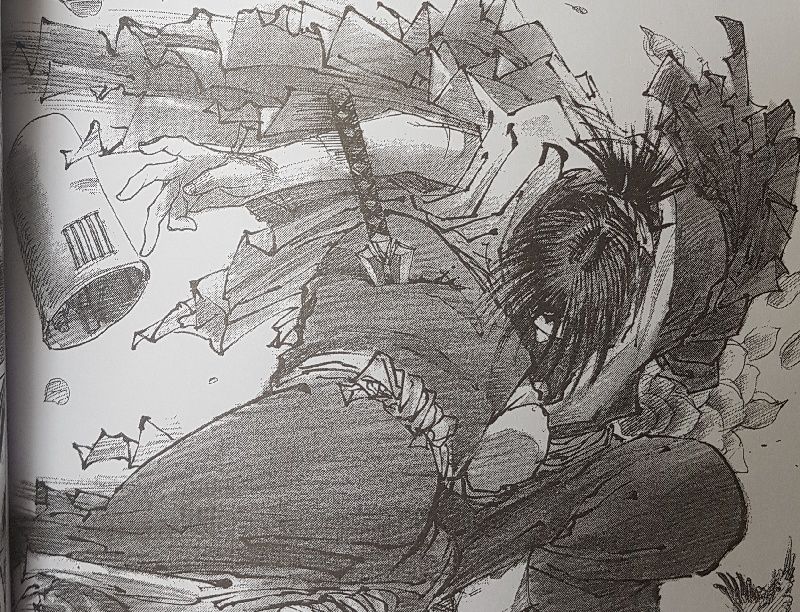Hiroaki Samura’s manga, unlike the classics of Kazuo Koiki and Goseki Kojima, is not a realistic piece (you can guess by the title, I know). In addition to the immortal theme (who owe their powers to maggots, yummy), the opponents are also fantastic, incl. a samurai appears here with a tendency à la Dr. Frankenstein. The duels themselves are highly stylized – suffice it to say that there is one sword in the title, but the main character always carries twelve different blades, of which only katanas are traditional, and the rest were invented by mangaka. This entertaining approach makes me very happy, because this kind of samurai stories are still like medicine.

soul Hunter
The story in The Sword of the Immortal is relatively simple. The main character, Manji, is a scoundrel. He has stained his honor more than once, serving first to the wicked daimyō and then killing a hundred law enforcement officers. Among them was his sister’s husband, which drove her mad and later died. To redeem his sins, Manji decides to use his immortality and exceptional skill in martial arts to kill a thousand villains. To this end, he agrees to become the bodyguard of Rin Asano, who wants to avenge the family murdered by outcasts who call themselves “The School of Dabbing Swords”.
Samurai of the week
The story unfolds from meeting one sword master from a cursed school to meeting another sword master from a cursed school. Usually we get to know the opponents’ motivation, for which they joined the sledge sword, and then an effective duel takes place. The fights are written very well – the opponents use different weapons, which makes their duels with Manji unique. It is intriguing that the protagonist, although he cannot be denied combat skills, is not omnipotent here. Many of the skirmishes could have ended in his defeat, if not for the gift (or perhaps a curse) of immortality.
And although I read the first volume quickly and with curiosity, I am very intrigued how it came to be that there are as many as fifteen such enlarged volumes. The beginning is based on the “samurai of the week” scheme, which can quickly become routine. At the moment, the Samura comic does not give a hint of how all this can develop.

Black versus gray
I saw a comparison with the previous release on the Internet and the original one stood out with much deeper blacks. The new sword of the immortal uses grays rather than the color of black ink. I have not got the information on what this change is dictated by, but it makes the frames a bit less readable. At the same time, it is not a big problem, because Samura uses sketchy style in many places. I’m used to manga with precise contouring of even the smallest details, and here is a lot of raw, incomplete drawings. And they are great. Spreads are even more impressive – each ending of the duel has its own two-sided illustration showing all the cuts in the smallest detail. A macabre masterpiece.
And a digression on the issue, which overall looks very good (enlarged format, several hundred pages – the best). Just as I have no problem with translating names (eg Piwus in Dragon Ball Super <3) or onomatopoeia, I do not understand why translator Tomasz Molski decided to use the word “zaprzańczy”, which in my opinion is overcomplicated and lacks the appropriate melody.
Who wants to live forever?
The first edition of the Sword of the Immortal was not fully published in Poland. I wish Kotori much more perseverance and happiness (including access to paper) . Hiroaki Samura’s manga after the first volume may not be particularly original, but it provides great entertainment.


